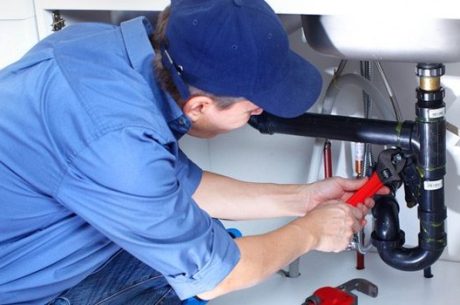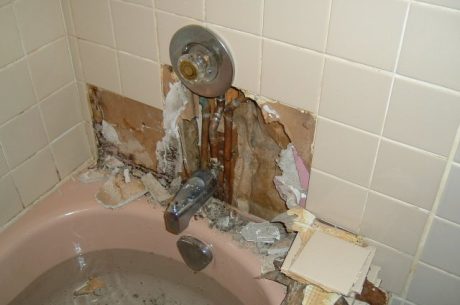Table of Contents
Detecting if Water Damage Is New or Old
Water damage is a common issue for homeowners, and identifying whether it is new or old can be crucial for both repair and insurance purposes. Understanding the age of water damage helps in assessing the extent of the problem and determining the necessary steps for remediation.
In this guide, we will explore various methods and signs to distinguish between new and old water damage.
Why Identifying if Water Damage Is New or Old is Important
Before diving into the specifics, let’s understand why it is essential to determine the age of water damage:
Insurance Claims: Insurance companies often require detailed information about the damage to process claims. Knowing whether the damage is new or old can affect coverage.
Repair Costs: Older water damage may have caused more extensive deterioration, leading to higher repair costs.
Preventive Measures: Identifying the source and age of water damage can help in preventing future occurrences.

Signs of New Water Damage
New water damage tends to have certain characteristics that are relatively easy to spot. Here are some indicators that the water damage is new:
- Dampness and Moisture
Wet Surfaces: If the affected area is still wet or damp to the touch, it is likely that the damage is new.
Water Stains: Fresh water stains are usually dark and visibly wet. They may appear suddenly after a rainy day or plumbing issue. - Musty Odor
Strong Odor: A strong musty smell is often associated with new water damage. This odor is usually more intense and noticeable when the water is still present.
Localized Smell: The odor is typically localized to the area where the water damage has occurred. - Visible Mold Growth
Fresh Mold: New water damage can lead to fresh mold growth within 24-48 hours. Fresh mold is usually soft and may appear in white, green, or black patches.
Rapid Spread: Mold that spreads quickly and appears suddenly is a sign of recent water intrusion. - Water Pooling
Puddles: Observing standing water or puddles is a clear indication of new water damage.
Active Leaks: If you notice active dripping or leaks, the damage is recent and requires immediate attention.
ALSO READ: What to do when you have water damage in a commercial space.
Signs of Old Water Damage
Old water damage has distinct characteristics that differentiate it from new damage. Here are some signs that the water damage is old:
- Dry and Cracked Surfaces
Dry Stains: Old water stains are usually dry and may have a yellow or brown tint. They often appear faded compared to fresh stains.
Cracking and Peeling: Prolonged exposure to water can cause surfaces to crack, peel, or warp. This is a sign that the damage has been present for some time. - Persistent Musty Odor
Lingering Odor: While new water damage has a strong musty smell, old water damage has a lingering, less intense odor that has permeated the area over time.
Widespread Smell: The odor from old water damage is often more widespread and can be detected throughout the house. - Established Mold Growth
Dry and Powdery Mold: Old mold growth appears dry, powdery, and may crumble when touched. It can have various colors, including black, green, or brown.
Mold Stains: Persistent mold stains that do not spread quickly are indicative of old water damage. - Structural Deterioration
Rotting Wood: Continuous exposure to water can cause wood to rot, become soft, and lose its structural integrity.
Weak Drywall: Waterlogged drywall becomes weak over time, leading to bulging, sagging, or crumbling.
How to Address the Issue after Identifying if Water Damage Is New or Old
Whether the water damage is new or old, addressing it promptly is essential to prevent further deterioration and health risks. Here are steps to take:
- Identify and Stop the Source
Plumbing Issues: Fix any leaks, broken pipes, or faulty appliances that may be causing the water damage.
Roof and Gutters: Ensure that your roof and gutters are in good condition to prevent water from seeping into your home. - Dry the Affected Area
Ventilation: Increase ventilation by opening windows and using fans to dry out the affected area.
Dehumidifiers: Use dehumidifiers to remove excess moisture from the air and speed up the drying process. - Clean and Disinfect
Remove Mold: Carefully remove any mold growth using appropriate cleaning agents and protective gear.
Disinfect Surfaces: Disinfect all surfaces that have come into contact with water to prevent mold and bacterial growth. - Repair and Restore
Replace Damaged Materials: Replace any materials that have been severely damaged, such as drywall, insulation, or flooring.
Repaint and Refurnish: Repaint walls and refurnish the area to restore it to its original condition.
Preventing Future Water Damage in your home
Taking preventive measures can help you avoid future water damage. Here are some tips:
1. Regular Inspections:
Conduct regular inspections of your home’s plumbing, roof, and foundation to detect potential issues early.
2. Proper Drainage:
Ensure that your home has proper drainage systems to direct water away from the foundation.
3. Gutter Maintenance:
Clean and maintain your gutters regularly to prevent blockages that can lead to water overflow.
Conclusion
Identifying whether water damage is new or old is essential for effective remediation and prevention. By understanding the signs and taking prompt action, you can protect your home from further damage and ensure a safe living environment. If you are unsure about the extent or age of the water damage, consider consulting a professional for a thorough assessment.
By following these guidelines, you can create an engaging and informative blog post that helps homeowners understand and address water damage effectively.
For Water Damage Remediation – Call (877) 750-7876
After Identifying if Water Damage Is New or Old, and you need water damage remediation, call PuroClean Emergency Recovery Service New Jersey to perform all water damage services.
If your New Jersey home experiences water damage, contact us as soon as possible. Swift action is essential to minimizing damage and getting your business back on track. Reach out to PuroClean Emergency Recovery Service New Jersey at (877) 750-7876 to benefit from our expertise and restore your property after water damage.
FAQs
How can I tell if water damage is new or old?
To determine if water damage is new or old, you can look for several signs:
Dampness: New water damage will feel wet or damp to the touch.
Water Stains: Fresh water stains are darker and visibly wet, while old stains are usually dry with a yellow or brown tint.
Mold Growth: New water damage may show fresh, soft mold growth, while old damage will have dry and powdery mold.
Smell: A strong and localized musty odor often indicates new water damage, whereas a lingering, widespread odor is a sign of old damage.
What are the visual indicators of old water damage?
Old water damage has some distinct visual indicators:
Dry and Cracked Surfaces: Surfaces may appear cracked or peeling.
Discolored Rings: Older stains often have concentric rings, similar to tree rings, indicating repeated exposure to water.
Structural Deterioration: Look for signs of wood rot, weakened drywall, or warped materials.
Why is it important to determine the age of water damage?
Determining the age of water damage is crucial for several reasons:
Insurance Claims: Insurance companies may require information on whether the damage is new or old for claim processing.
Repair Costs: Older damage might have caused more extensive deterioration, leading to higher repair costs.
Preventive Measures: Identifying the age helps in locating the source and preventing future occurrences.
Can mold growth indicate if Water Damage Is New or Old?
Yes, mold growth can provide clues about the age of water damage:
Fresh Mold Growth: New water damage can lead to mold growth within 24-48 hours. Fresh mold is usually soft and can appear in various colors.
Established Mold: Old water damage will have dry, powdery mold that may crumble when touched and may have different colorations, such as black, green, or brown.
What steps should I take if I discover water damage?
If you discover water damage, take the following steps:
Identify and Stop the Source: Fix any leaks or faulty plumbing to stop further water intrusion.
Dry the Affected Area: Increase ventilation, use fans, and dehumidifiers to dry out the area.
Clean and Disinfect: Remove any mold and disinfect all surfaces.
Repair and Restore: Replace damaged materials and restore the area to its original condition to prevent future issues.




 PuroClean Emergency Recovery Services
PuroClean Emergency Recovery Services